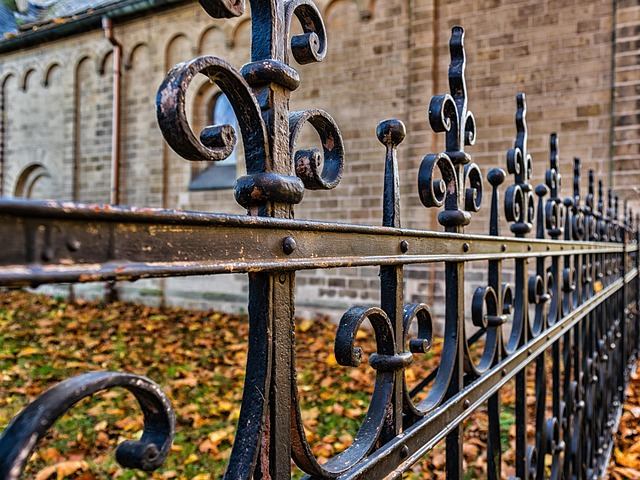Large properties present unique fencing challenges, requiring solutions that balance security, aesthetics, and affordability. This article guides homeowners through the process of selecting cost-effective fencing options for expansive lands. We explore traditional materials and their escalating costs, then delve into innovative, budget-friendly alternatives without sacrificing durability. Additionally, we offer design insights to enhance property security and curb appeal, along with installation tips and DIY considerations to maximize savings.
- Understanding Fencing Needs for Large Properties
- Traditional Fencing Options and Their Costs
- Cost-Effective Alternatives: Exploring Budget-Friendly Options
- Durable Materials for Longevity and Lower Maintenance
- Design Ideas to Enhance Property Security and Aesthetics
- Installation Tips and DIY Considerations for Savings
Understanding Fencing Needs for Large Properties
Large properties present unique fencing challenges compared to smaller plots. The extensive perimeter, diverse terrain, and often remote locations demand robust yet cost-efficient solutions. Understanding these specific needs is crucial for effective planning. Property owners should consider not only aesthetic appeal but also functional aspects like security, privacy, and durability, especially in regions prone to harsh weather conditions.
Fencing options for large properties can vary from traditional materials like wood or metal to innovative alternatives such as vinyl or composite options. Each material offers distinct advantages regarding maintenance, longevity, and initial cost. Additionally, customizing fence designs to fit irregular land shapes, incorporating gates and access points, and ensuring adequate height and strength are essential considerations for a functional and secure fencing system tailored to the property’s unique requirements.
Traditional Fencing Options and Their Costs
Traditional fencing options include materials like wood, vinyl, and chain link, each with varying costs. Wood fences are aesthetically pleasing but require regular maintenance and can be expensive to install due to labor and material costs. Vinyl fences offer durability and low maintenance but come at a higher upfront cost compared to wood. Chain link fences are the most affordable option, suitable for security purposes, but lack visual appeal.
The price range for traditional fences can significantly vary based on factors like fence length, complexity of design, type of material, local labor rates, and whether you opt for custom installations or standard pre-built panels. Homeowners should also consider the long-term maintenance expenses associated with each option to determine the most cost-effective solution for their large properties in the long run.
Cost-Effective Alternatives: Exploring Budget-Friendly Options
When it comes to fencing large properties, traditional options can be both extensive and costly. However, there’s a growing array of cost-effective alternatives that offer both functionality and affordability. These budget-friendly solutions don’t compromise on quality or durability, making them ideal for homeowners looking to enhance their outdoor spaces without breaking the bank.
One popular choice is chain link fencing, known for its strength and versatility. It’s an affordable option that provides clear visibility and security, making it suitable for various applications, from backyards to agricultural settings. Another emerging trend involves vinyl fencing, which offers a range of styles and colors while requiring minimal maintenance. This low-cost solution is perfect for those seeking both aesthetics and ease of upkeep. Additionally, wood alternatives made from recycled materials are gaining popularity, providing an eco-friendly option that’s both durable and economical.
Durable Materials for Longevity and Lower Maintenance
When considering fencing solutions for large properties, selecting durable materials is key to ensuring longevity and minimizing maintenance efforts over time. Opting for high-quality, long-lasting materials like steel or vinyl can significantly reduce the need for frequent repairs or replacements. Steel fences, for instance, offer exceptional strength and resistance to rust, making them a robust choice for expansive spaces that require a secure barrier. Alternatively, vinyl fencing is known for its low maintenance requirements as it withstands various weather conditions without peeling, cracking, or fading.
These materials’ durability not only guarantees a long-serving fence but also provides cost savings in the long run. By investing in durable fencing options, property owners can avoid frequent expenses associated with repairs and replacements, ensuring their large properties remain well-secured and aesthetically pleasing for years to come.
Design Ideas to Enhance Property Security and Aesthetics
When designing a fencing solution for a large property, it’s crucial to strike a balance between security and aesthetics. Incorporating strategic design elements can enhance both visual appeal and safety. Consider a mixed-height fence with robust, tall posts at key points, topped with decorative caps or artful lighting. This not only adds visual interest but also provides enhanced security without appearing overly imposing.
Integrate natural elements like hedges or trees along the perimeter to create a harmonious blend with the landscape. Woven wire fencing with plant trellises can offer both privacy and a touch of greenery, while custom-designed wooden gates with intricate carvings can elevate the overall look and feel of your property. These design choices can make your large property both secure and visually stunning.
Installation Tips and DIY Considerations for Savings
When installing fencing on a large property, one key to cost-effectiveness is doing it yourself (DIY). This can significantly reduce labor costs. Start by planning your fence layout and selecting materials that suit your budget and needs—wood, vinyl, or chain link each have different pros and cons. Ensure the posts are set securely in concrete for stability. Consider pre-assembled panels for gates and fences to save time. Regular maintenance, like cleaning and painting, can extend the life of your fence.
For DIYers, measuring accurately and marking posts before digging is essential. Use a level to ensure posts are plumb. Digging holes for posts requires careful consideration of soil conditions; if necessary, use a post-hole digger or backhoe. Once posts are set, attach rails and panels following manufacturer instructions. Regular inspection throughout the process ensures you catch any mistakes early.
